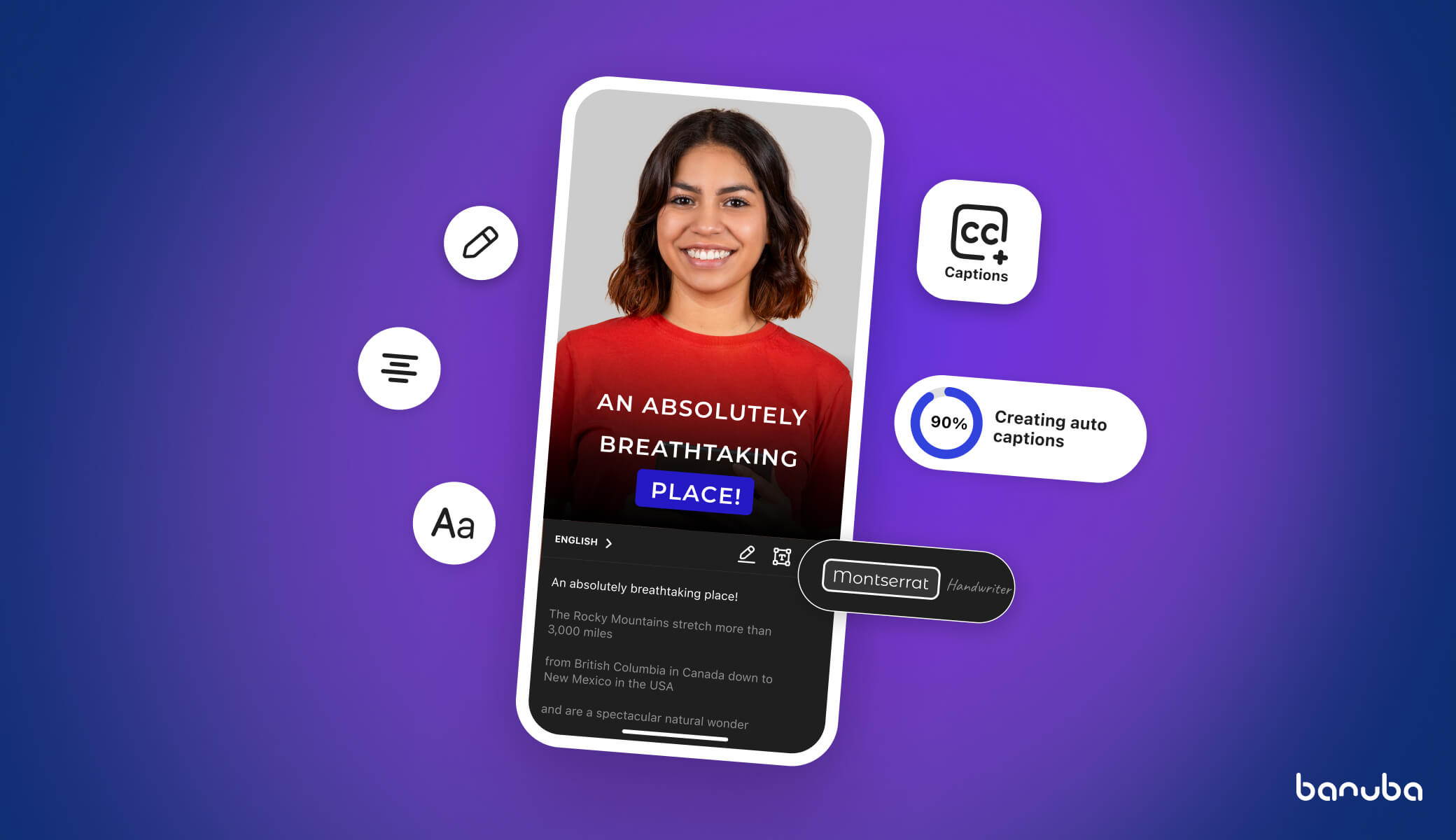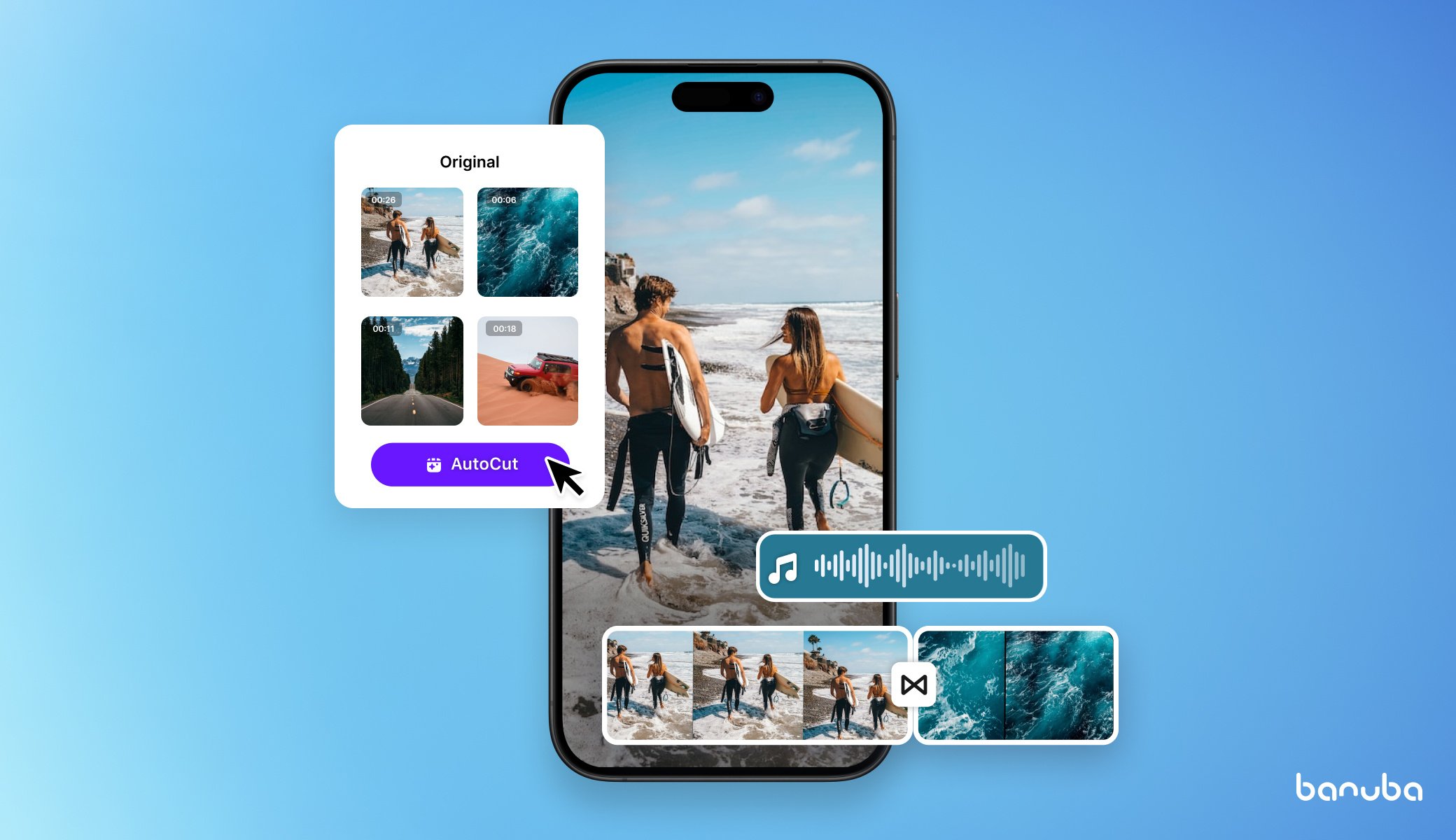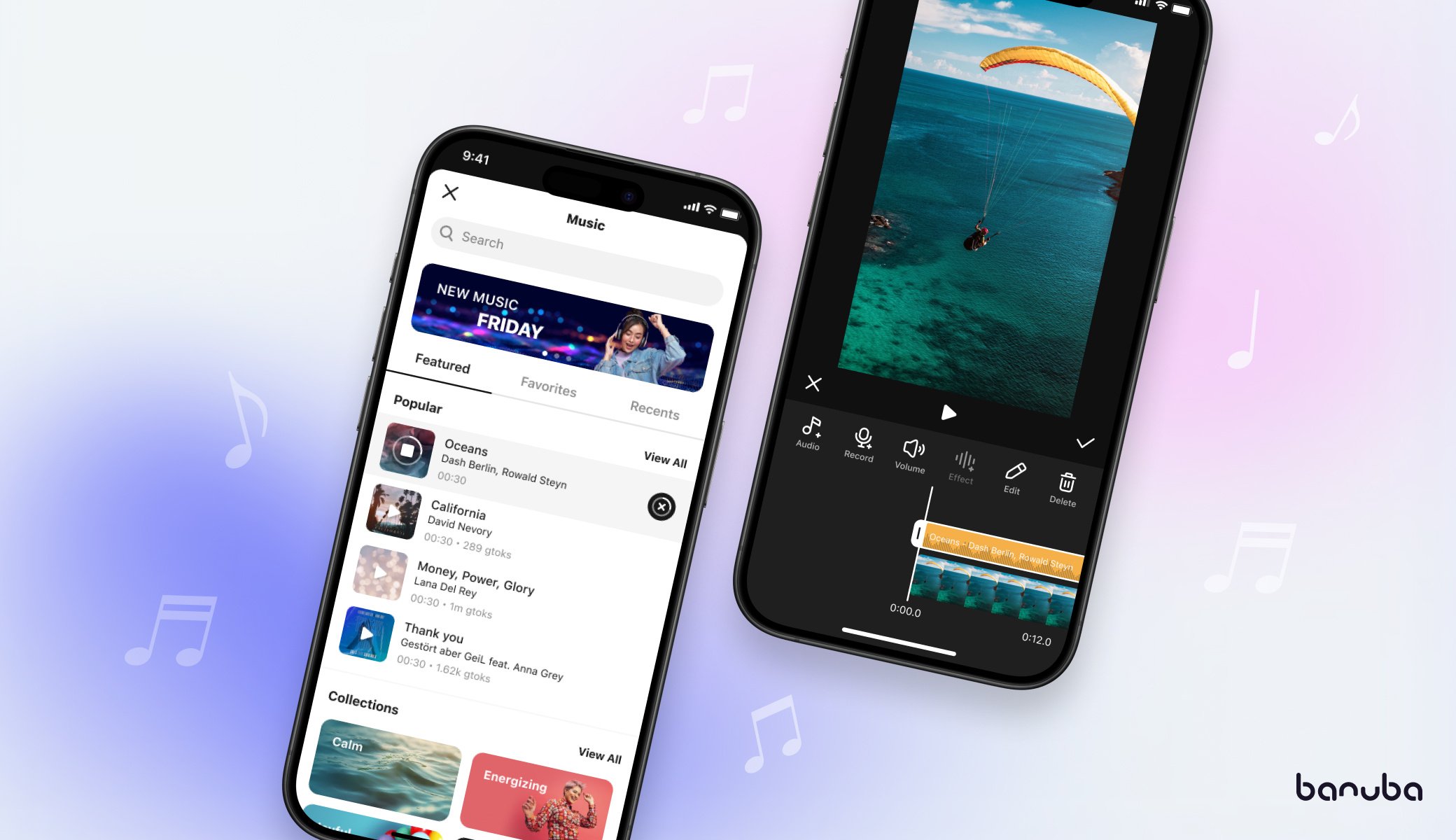How To Make A Short Video App: 10 Challenges to Consider
Many startups and product companies aim to launch their own short video apps like TikTok and Snapchat, but custom from-scratch development is a thorny process.
The outsourcing or in-house team should have mature and relevant expertise in creating multi-platform solutions that support lots of devices. Also, region-specific nuances make a difference in launching the app for the US-, Europe-, or India-based markets. More technical and business challenges are yet to come down the road of video app development.
For 6 years in the AR video editing market, we've completed multiple challenges and know the process inside out. So, now we want to share our expertise, tips, and tricks for building your own short video app and discuss 10 challenges you should consider. More than that, this post will help you know the vivid benefits of using ready-made SDK solutions to launch a video app time- and cost-efficiently.


The Rise of Short Video Apps
The short video app market is booming. Many social media companies are adding video editing features to their apps to allow users generate TikTok-like videos.
- Snapchat introduces a feature to compete with TikTok called Spotlight to entice users to create and share videos.
- Reddit acquires TikTok rival Dubsmash for users, who can already upload and stream videos, could edit and create short-video content.
- Instagram witnesses a boost in short videos among users and places Reels, a tab to make and discover short, fun, and trending videos, on the home page.
“Change is happening quickly right now, including how both of these groups use Instagram and engage with the world. This year, with the pandemic and much of the world sheltering in place, we’ve seen an explosion in short, entertaining videos on Instagram,”
- Adam Mosseri, Head of Instagram.
Following big players, many developers are looking to jump on the bandwagon with a custom short video making app. However, developing one is not an easy task.
How to Make Short Video Apps: 10 Challenges to Consider
Let's explore the most common technical pitfalls developers face when building mobile short video apps with face filters. So, what does it take to make one from scratch?
1. Video encoding and decoding expertise
Video encoding compresses large, raw video and audio files so that they use less network bandwidth. With further decoding, videos can be transmitted across constrained networks and displayed in the appropriate format in your app, platform and device.
Mobile video editing app development requires the fundamental knowledge of both. This expertise is rare due to narrow industry focus and subject complexity. The challenge to find it gets compounded by a diversity of video formats, platform differences and ever-increasing mobile device market.
Why is it important?
If you look to make a successful video app like TikTok, you need experienced video engineers. They'll keep the development on track and handle complex technical tasks:
- Conduct research on the best audio and video codecs, 3rd party APIs or integration options.
- Integrate the video recording and processing features so that they worked well with one another.
- Develop new video processing algorithms and features.
- Optimize and debug features for iOS and Android platforms to achieve optimal performance.
- Plan new scope of features, estimate risks and possible blockers.
Without the fundamentals of video processing, encoding and decoding, chances are your app may end in a deadlock.
2. Platform-specific video formats support
Those who make a short videos app from scratch need to consider different factors. One of the most important ones yet not-so-obvious is the platform-specific format support.
iOS and Android platforms support specific video and audio formats. They can vary depending on the version and device model. As an example, Dolby Digital, also known as Dolby AC-3 audio compression codec. The Android guide lists it among its codecs, yet not all Android devices support it.
Why is it important?
When testing your app on real users, you may reveal unexpected issues with its performance on different platforms and devices. Resolving them takes time and provokes negative user feedback. To minimize the risks, you need to methodically research and test the video formats compatible with different platforms and devices.
3. Support of mid and low-end iOS and Android devices
Not limited to platform-specific support, you need to test and adapt your video editing app for different device categories, including low-end and mid ones, both iOS and Android.
Why is it important?
The device range greatly varies based on which geo and audience your video editing app targets. E.g. in Asian markets, most users are on mid Android and in the American markets, users prefer mid-top iPhones. Adapting your app for broader device reach allows you to reach out and promote your app on more markets.
4. Video effects creation expertise
Filters and effects are an essential part of any short videos app. They improve the camera image and allow users to make high-quality videos faster and easier. Yet, video effect development requires graphic design skills and coding skills, too.
Why is it important?
 Banuba Video Editing SDK: Video Effects Demo
Banuba Video Editing SDK: Video Effects Demo
Investing time and efforts into effect creation pays off. The more varied video filters your app provides, the more interesting videos your audience will generate. And more willingly they'll share them on social networks, helping your app to grow organically.
Most popular video effects to be added to an app:
- Timer filters allowing users to slow down or fast-forward the video feed.
- LUT filters to achieve an Instagram-like effect in videos
- TikTok-like video filters to enhance the content and set the mood e.g. neon lighting, retro images, rave, cathode, etc.
5. Face AR and face tracking development
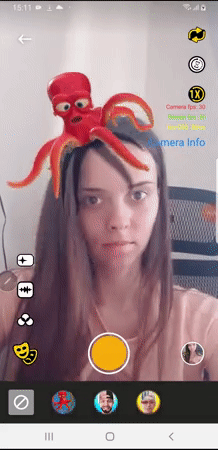 Banuba Video Editing SDK: Face Filters Demo
Banuba Video Editing SDK: Face Filters Demo
Short video apps have more chances to become viral with augmented reality filters and Snapchat-like lenses. These effects need face tracking and detection technology to bring the Face AR experiences to the camera. Their development is challenging yet essential.
Why is it important?
Without the ready software kits, development and integration of the Face AR features into your video editing app will take months and even years. Additionally, the Face AR content design itself requires time and strong 3D graphical expertise.
Also Read: What It Takes To Make Face Filters [Guide]
6. OpenGL and Metal expertise
To process videos, the short videos app needs an appropriate execution environment. The two most essential components are the camera and render engine. The camera component consumes and processes the input video data. The render surface creates the OpenGL context with target framebuffer where the final video is rendered.
To implement the video rendering part you need to have experience with 3D programming, OpenGL or Metal and invest much time and efforts.
Why is it important?
The powerful and feature-rich rendering component ensures high-quality video results after its processing. The more capabilities it supports, the more varied graphical effects can be overlaid on a video. And better quality Face AR filters you can add to your app.
7. Face AR post-processing development
To continue with Face AR, most short video apps allow applying filters in real-time. However, users often want to enhance their existing short form videos and play with multiple effects.
The Face AR post-processing does the job. Developing such functionality involves the expertise and fundamental knowledge of previous areas. And again, it requires much time.
Why is it important?
Adding face filters to recorded videos (post-processing) is a unique feature developed by our team. It unlocks more freedom for users to edit their short form videos. You can make your video editing app more powerful, gain competitive advantage and stand out on the market.
8. AR cloud to store content
Finally, you can integrate Face AR filters directly into your short video platform or upload them using our AR Cloud. With the in-app approach, masks are downloaded with your app and can be used without an Internet connection. However, you're limited to the capacity and storage, since each mask adds 2,5 MB average.
The AR Cloud keeps all the assets on the backend, so you can add many effects in your app without increasing its size. The masks will load when the user is connected to wi-fi.
Why is it important?
The more filters you have in your short video platform and the more frequent updates you make, the better user retention and involvement will be.
9. Android camera expertise
The Android device market abounds with manufacturers. The mobile hardware features are often not compatible with video editing functionality your app may provide.
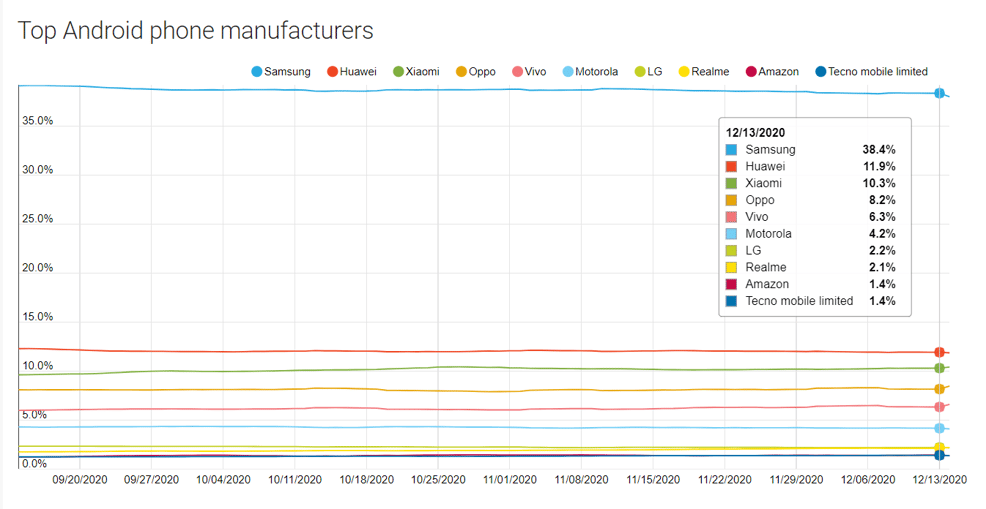 Image Source: Top Android phone manufacturers, AppBrain.com
Image Source: Top Android phone manufacturers, AppBrain.com
To make sure you video editing app functions well on most popular devices, you need to constantly review and update the database of supported devices, not mentioning case-by-case technology and feature bug-fixing and optimization.
Why is it important?
Extensive device support of your video editing app allows you to reach broader audiences and make your app accessible for more users.
10. Video Editor feature extension
Most developers wisely decide to go with an MVP when making a video editing app that includes a limited set of features. It provides a fasted launch, allows you to test the market, get first users and feedback. After the app launch, the priority of new feature development often gets downgraded since developers focus on app debugging.
In the long term, adding AI video editing capabilities will be beneficial.
Why is it important?
To keep users engaged and make them stay, you need to invest time and deliver more value in your app, adding new video editing features.
How Banuba SDK Empowers Video Editing Apps
Banuba provides Video Editor SDK for iOS and Android which allows you to add video effects, face filters, AR stickers and video editing features into your app. It's a perfect fit for video editing app development. Developers can integrate ready features into their short video apps to create a Tiktok-like experience.
Our SDK competitive advantages:
- Backed by an experienced team of video engineers, our SDK is a mature product. It includes unique features like video post-processing with Face AR.
- Our SDK supports an extensive list of Android devices, regularly tested and updated by our team.
- We provide video editing effects, most popular TikTok-like and unique ones.
- We provide high quality Face AR masks designed by our Art team. Developers can select them from the catalog featuring over 600+ face filters.
- Video Editing SDK integrates with our Face AR SDK, our internal product to enable the most fascinating 3D filtering features in video editor apps. Developers reduce the risk of software incompatibility and dealing with 3rd party companies.
- We can quickly add new video editing features and ship them to your app.
- You save on the development costs and time by integrating all features with one SDK. We test SDK in real application on a wide range of platforms and devices, from low end to latest ones.


